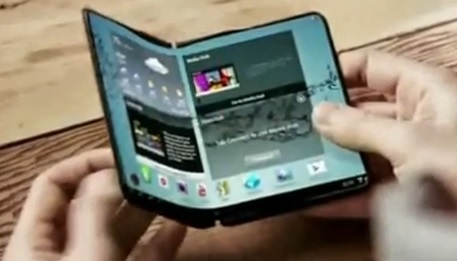These new handsets are slated to be launched in November, in time for the holiday shopping season.
LG Electronics Inc. has announced that it is now beginning to mass produce gadgets that have curved displays, such as in the case of the smartphones that are set to launch next month.
The goal is to carve out a larger portion of the market that is currently held by its larger rival, Samsung.
Last month, Samsung announced that it would begin releasing curved display gadgets as of October. These smartphones were to become available at some point this month from the leading smartphone manufacturer in the world. It made this announcement in order to help to keep ahead of the slowing high-end smartphone market growth.
Curved displays are still in the beginning states of gadget development but could be important to wearables.
 This new type of display can make it possible to have bendable and foldable designs that could make it possible for wearable gadgets and other mobiles such as smartphones and tablets to be able to take on new designs that could dramatically change the look and design of the high end smartphone market.
This new type of display can make it possible to have bendable and foldable designs that could make it possible for wearable gadgets and other mobiles such as smartphones and tablets to be able to take on new designs that could dramatically change the look and design of the high end smartphone market.
In the case of LG Display Co. Ltd., they have announced that the gadgets that will use this technology, so far, will include a six inch display smartphone that is curved from top to bottom. This LG device is expected to be launched in November. At the same time, the Samsung handset will be curved from side to side, instead of the top to bottom shape from LG Electronics.
As of January, Samsung had become the global smartphone gadgets leader, after having taken the position from Apple Inc. In that month, it revealed a line of prototype products that were based on a flexible screen as well as a display extending from the side of the device.
According to tech experts, the technology has yet to be manufactured in a way that can be mass produced cheaply, and there is still a need to come up with display panels that are resistant to heat and that are thin at the same time. Curved displays are already available in larger gadgets such as big screen televisions. Both LG and Samsung have been selling these TVs this year.
Mobile commerce may be more about technology for retailers
Mobile technology has begun to change the way consumers participate in retail and commerce as well as how they interact with one another and the world around them. As such, businesses have been forced to adapt to the changing interests of consumers and embrace mobile engagement strategies and focus more heavily on mobile commerce. Gartner analysts suggest that a focus on mobile commerce is beneficial for retailers, but companies should prioritize their use of mobile technology over commerce initiatives in order to optimize revenue generation.
Embracing technology could help boost revenue
Many technology firms around the world have taken a strong interest in mobile commerce. These firms are offering mobile commerce services to retailers and marketing these services as ways to boost revenue by engaging mobile consumers. Gartner analysts suggest that these services may have little impact on revenue if retailers themselves do not become more accommodating to mobile technology. Optimizing websites so they can be easily viewed on mobile devices and providing consumers with ways to find information with their smartphones and tablets while in physical stores is considered more important than actually having a mobile commerce platform.
 Retailers have high hopes for mobile commerce
Retailers have high hopes for mobile commerce
A recent Gartner survey suggests that the world’s leading retailers have high hopes for the mobile space as well as e-commerce. The survey shows that retailers expect the majority of their sales to continue coming from physical stores, but 14.6% will come from e-commerce and 6.5% will come from mobile commerce by 2017. If retailers do not focus more on accommodating mobile technology, however, they may miss out on potential revenue from consumers eager to spend money through their mobile devices.
Mobile sector continues to evolve
Return on investment can be a tricky subject in the world of mobile commerce. There are a wide range of platforms available to consumers, but none of these have yet established themselves as a leader. Moreover, mobile commerce itself is continuing to evolve. The sector is moving away from NFC technology, which has formed its backbone for the past few years. As mobile commerce changes, ways to generate revenue through this sector are becoming somewhat vague.
 This new type of display can make it possible to have bendable and foldable designs that could make it possible for wearable gadgets and other mobiles such as smartphones and tablets to be able to take on new designs that could dramatically change the look and design of the high end smartphone market.
This new type of display can make it possible to have bendable and foldable designs that could make it possible for wearable gadgets and other mobiles such as smartphones and tablets to be able to take on new designs that could dramatically change the look and design of the high end smartphone market.
 Retailers have high hopes for mobile commerce
Retailers have high hopes for mobile commerce